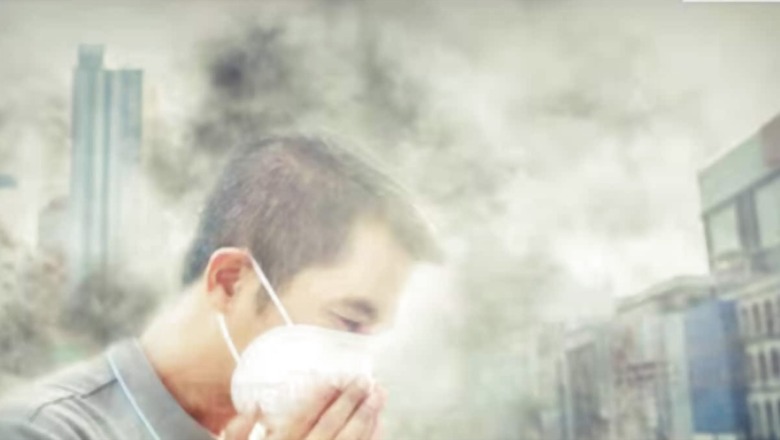
views
One of the main risk factors for several lung-related diseases is air pollution. The air we breathe has a direct impact on our overall lung health because our lungs are continuously exposed to it. All age groups are affected by poor air quality, but women, children, and the elderly are the most vulnerable. Meanwhile, poorer socioeconomic groups are disproportionately impacted as they are more likely to be exposed to air pollution both indoors and outdoors.
Here’s how air pollution (indoor and outdoor) affects our health:
Air pollution (outdoor)
The burning of fossil fuels, industrial activities, and vehicle emissions are the main causes of outdoor air pollution. Nitrogen dioxide, sulphur dioxide, carbon monoxide, and particulate matter are typical outdoor contaminants. These pollutants can have serious effects on lung health.
Research on individuals who operate autorickshaws and are regularly exposed to outdoor pollution has revealed increased rates of respiratory problems such as asthma, dyspnoea, and persistent cough. The risk of developing lung cancer and chronic bronchitis rises with prolonged exposure to these toxins. According to WHO estimates, 29 per cent of deaths from lung cancer and 43 per cent from COPD are caused by air pollution.
In addition, children are particularly susceptible to the negative consequences of pollution. Studies indicate that children who grow up in heavily polluted environments are more likely to develop respiratory infections and may suffer premature death from respiratory issues.
Air pollution (indoor)
Indoor air pollution is especially dangerous in rural and low-income households. Many families still use biomass fuels such as wood, animal dung, or agricultural waste for cooking, employing traditional methods like chulhas. Women and children are particularly vulnerable due to the increased concentration of hazardous chemicals in the home.
According to estimates from the World Health Organization (WHO), nearly one-third of the world’s population still cooks over open flames, which contributed to the deaths of 3.2 million people in 2020. Exposure to these pollutants is associated with lung cancer, exacerbation of asthma, and chronic obstructive pulmonary disease (COPD).
Allergens from pests, mould, pet dander, and household dust are other common indoor pollutants. These irritants increase the likelihood of respiratory infections and can worsen conditions like asthma. Tobacco smoke, another significant cause of indoor pollution, affects both smokers and non-smokers through second and third-hand exposure. Hazardous particles can remain on surfaces even after quitting smoking, posing an ongoing risk.
Minimising the effects of air pollution
Several strategies can be employed to reduce the detrimental impact of air pollution on lung health. A crucial first step is to adopt cleaner cooking techniques, including the significant reduction in indoor pollution that comes from using LPG instead of biomass fuels. Indoor air quality can also be improved through better ventilation and a decrease in volatile organic compounds (VOC)-emitting products.
Lung health can be preserved by minimising outdoor activity during peak pollution hours, using air purifiers indoors, and wearing respiratory masks in contaminated areas.
To counteract the effects of pollution, it is essential to maintain a healthy lifestyle. Regular exercise, a balanced diet rich in antioxidants, and quitting smoking can strengthen and protect the respiratory system.















Comments
0 comment